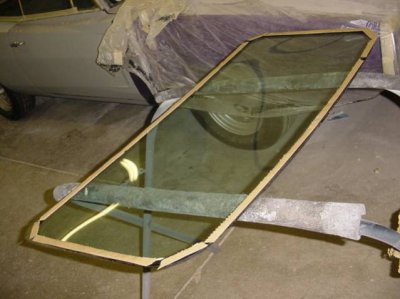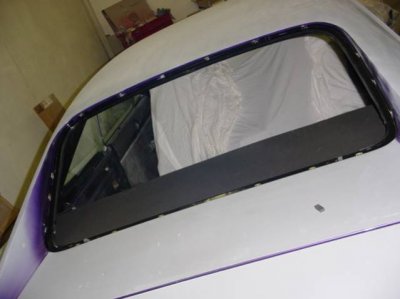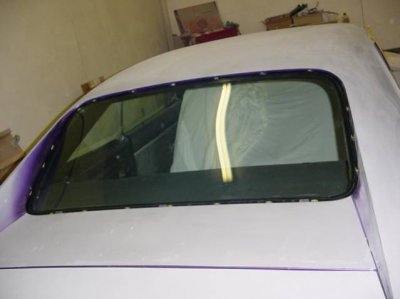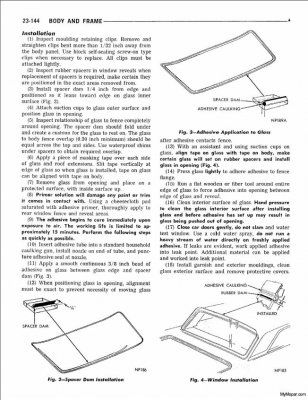Ok, going to try and reseal both the front and back glass in my 68 coronet. Any advise you can throw at me is welcome !!! Front gasket is on order from classic, rear glass is sealed with butyl rope I assume. Question is, what size round butyl will work or would urethane in a caulk tube be better ? Was thinking of using butyl then seal the gap with urethane once the glass is in ? I have some friends that have done front glass installs before so hopefully that one is simple. Can I also get butyl in a caulk tube ? Those with experience please chime in !! Thanks ..
there are several ways to seal a windshield or back glass with good results.
When sealing glass cleanliness is very important.
I use a single edge razor blade to clean the sealing area of the glass along with glass cleaner. sometimes OOO steel wool helps along with windex. I also wear a good quality mechanics or painter gloves to keep any body oils from transferring to the glass and pinch-weld.
Front glass after removing the glass from the auto inspect the pinch weld carefully for any voids and rust and fix if needed.
Prime with a good quality automotive primer and paint for the best results. now is a good time to carefully inspect the revel molding clips and replace any in doubt then test fit the revel moldings to make sure everything will fit. You don't want to discover a problem after the glass is install or you will be removing the windshield again.
If you got the windshield out of the auto with the existing rubber seal without busting the windshield good for you. I usually cut the rubber from the glass assuming the glass is going to be reused. unless the windshield gasket is new or close to new get a new one. A new soft pliable seal is most important to have success when sealing the rubber to the glass.
if the seal is new it is a good idea to wash it to get all of the release agent or what ever slime may be on the seal.
If reusing the old seal it to must be cleaned very well with what ever it takes to get any old sealer off it.
If using a new seal I like to fit it to the windshield while out of the car with the glass on a windshield stand. This should all be done in a warm shop so the rubber and glass will be more flexible.
If using an old rubber seal inspect the groove where the glass fits very carefully for any chips of glass, rocks or anything.
I use a windshield bone for this but a screw driver could work.
Once you are happy with the fit of the seal to the glass put the seal on the prepped pinch weld and fit it up.
Now is decision time. You can use the original
bedding and glazing compound or urethane sealer I have used but with success but prefer using urethane {I use the primer-less type}once you start with the urethane you need to be prepared to finish the job in on session. cut the tip of the urethane tube small and warm the tube of urethane up before starting. apply sparingly along the bottom where the seal lays in the body then as I install the seal to the pinch weld install a small bead in the groove of the seal to the body, just enough to make a seal. once the seal is set in the body I lay a small bead of urethane in the bottom of the seal where the glass will sit and up the sides an inch or 2. sparingly is the key here use just enough or you will have a mess to clean up. I am amusing we are working with a lock type seal to with the seal open using your windshield bones carefully lip the seal around the glass until is is seated. Then finish the sealing with a "small" amount of urethane between the seal and glass. when the rubber is locked i like to see just a small amount ooze from between the glass and seal. Now we know the glass is glued to the seal and the seal is glued to the body. you can either clean the excess urethane up now or wait until it dries and scrape it off with a razor being careful not to cut the seal.
you can now water test the windshield for leaks before installing the revel molding. A little water {and heat} will help the urethane set up just don't blast the water full force and blow the seal.
I like to water test as soon as possible in case I need to sneak some more sealer between the glass or body. Once you are happy and have no leaks is when I would use the bedding and glazing compound and fill the lower gap between the rubber and body so water and debris won't gather in that area. I have done the entire job with just using the glazing and bedding compound but found the stuff will weep from between the glass and seal when the car gets hot setting out in the sun.
The back glass use a 5/16 butyl tape same prep as the windshield.
look closely at the pinch weld to make sure it is not bent up or down it needs to be the same shape as the glass. if in doubt mask the edge of the glass and with some help set it in the opening and take a close look from inside for fit.
prime with the pinch weld primer for butyl as it is is liquified butyl from what I was told from our glass rep.
I prefer to lay the tape to the body rather than the glass. it is to easy to catch a revel clip and screw up the seal if it is on the glass. leave the paper on the tape and don't touch the seal with your fingers. use a piece of the paper between, again need a warm shop for a good seal. I have even used a heat gun around the tape before setting the glass if it is not very warm.
you then carefully push the glass down and should be able to see the glass seal to the butyl.
go slow and evenly around the glass several time until sealed.
everything needs to be real clean for a good seal. back fill the big gaps with more bedding and glazing compound as you did on the windshield.
hope this helps
one of my projects
- - - Updated - - -
Great info guys, thanks ! So I'm assuming when you say "butyl tape" you are referring to the 5/16 thick flat butyl not the round "butyl rope" correct ? Did you put any liquid butyl around the back glass after it was set in for an extra seal ?
this is what we use



















